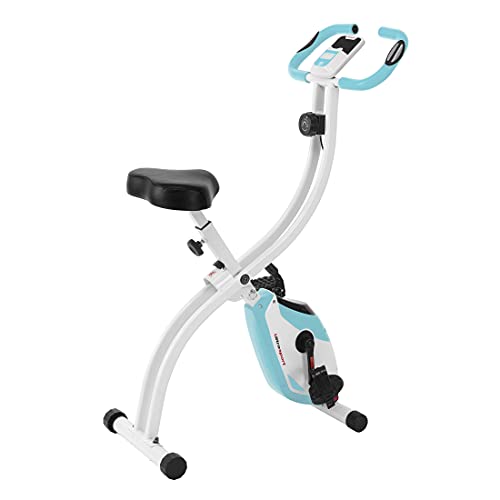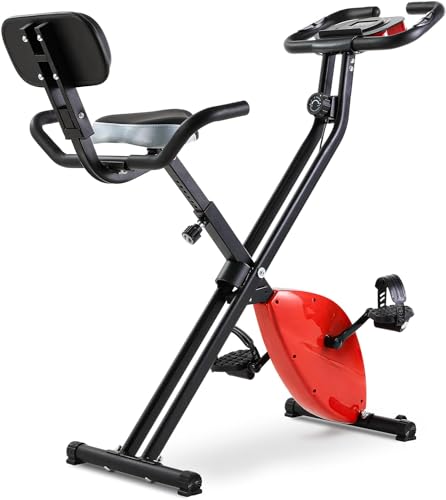What's The Job Market For Stationary Bike Exercise Professionals?
페이지 정보

본문
 The Power of Stationary Bike Exercise
The Power of Stationary Bike ExerciseIn the busy world these days, maintaining a healthy lifestyle can frequently appear like a difficulty. One efficient and quickly accessible service to this issue is the stationary bicycle. Whether you're a beginner or an experienced athlete, stationary cycle for exercise bikes use a versatile, low-impact, and efficient way to stay fit. This article explores the advantages, appropriate strategies, and common questions surrounding stationary bike exercise, offering readers with a detailed guide to incorporating this form of workout into their regimen.
 Benefits of Stationary Bike Exercise
Benefits of Stationary Bike ExerciseCardiovascular Health
Stationary biking is an exceptional cardiovascular workout. It assists improve heart health by increasing heart rate and enhancing lung capability. Routine usage can lower the danger of cardiovascular disease, lower blood pressure, and enhance cholesterol levels.
Weight Management
Cycling on a stationary bike burns calories and assists in weight-loss. A 30-minute session can burn in between 200 and 300 calories, depending on the intensity and resistance settings. It is also a sustainable kind of exercise bicycles for sale, making it much easier to keep over the long term.
Low Impact
Unlike running or high-impact sports, stationary cycling is gentle on the joints. This makes it a perfect option for people with knee, hip, or back problems. It is also suitable for older grownups and those recovering from injuries.
Muscle Toning
Regular use of a stationary bike can assist tone and enhance various muscle groups, including the quadriceps, hamstrings, calves, and glutes. By changing the resistance, you can focus on various muscle areas and even engage your core and upper body.
Mental Health
exercise bicycles for sale, in basic, is known to increase psychological health, and stationary cycling is no exception. It releases endorphins, which are natural mood lifters, and can help in reducing tension, stress and anxiety, and anxiety. The recurring motion of pedaling can also have a meditative impact.
Convenience
Among the most significant advantages of stationary bikes is their convenience. You can use them in the house, at the fitness center, and even in a hotel space while traveling. This gets rid of the requirement for special equipment or weather, making it easier to adhere to a routine exercise routine.
Correct Techniques for Stationary Bike Exercise
To take full advantage of the benefits and avoid injuries, it's important to utilize the stationary bicycle correctly. Here are some essential methods:
Change the Bike
Seat Height: The seat should be at a height where your legs are nearly totally extended at the bottom of the pedal stroke, with a small bend in the knee.
Handlebar Position: The handlebars need to be changed to a comfortable height, normally a little higher or lower than the seat, depending on your choice.
Pedal Straps: If your bike has them, use the pedal straps to keep your feet firmly in location.
Warm-Up and Cool-Down
Warm-Up: Begin with a 5-10 minute low-intensity pedaling to heat up your muscles and prepare your body for the workout.
Cool-Down: End your session with a 5-10 minute low-intensity pedaling to gradually reduce your heart rate and cool down your muscles.
Pedaling Technique
Smooth Pedaling: Focus on a smooth, even pedaling motion. Prevent bouncing or jerking your body, as this can cause muscle stress.
Resistance: Adjust the resistance to challenge your muscles without overexerting yourself. A moderate resistance is typically adequate for the majority of workouts.
Hydration and Safety
Stay Hydrated: Drink water before, during, and after your workout to remain hydrated.
Safety: Ensure the bike is stable and safe before starting. Utilize a towel or mat to protect the seat and handlebars from sweat.
Incorporating Stationary Bike Exercise into Your Routine
Consistency
Frequency: Aim for at least 3-5 sessions weekly, depending upon your physical fitness goals and schedule.
Duration: Start with much shorter sessions (20-30 minutes) and slowly increase the duration as your endurance improves.
Range
Workout Types: Mix up your workouts to keep them interesting. Attempt period training, hill climbs, or steady-state biking.
Classes and Apps: Join virtual cycling classes or use physical fitness apps to remain motivated and track your development.
Progressive Overload
Increase Intensity: Gradually increase the intensity of your exercises by adding more resistance or increasing the period.
Set Goals: Set reasonable goals and work towards achieving them. This can assist you remain determined and see tangible results.
Combine with Other Exercises
Cross-Training: Combine stationary bike workouts with other types of exercise, such as strength training, yoga, or swimming, to develop a well-rounded fitness regimen.
Common FAQs
Q: Is stationary cycling as reliable as outside cycling?
A: While outside biking offers the included challenge of varying terrain and wind resistance, stationary biking is still extremely efficient. It offers a controlled environment where you can focus on specific muscle groups and keep a consistent strength. Both forms of biking deal significant cardiovascular and muscular benefits.
Q: How many calories can I burn on a stationary bicycle?
A: The variety of calories burned depends on factors such as period, strength, and resistance. On average, a 30-minute session can burn in between 200 and 300 calories. High-intensity interval training (HIIT) can increase this number substantially.
Q: Is stationary cycling ideal for any ages?
A: Yes, stationary biking appropriates for individuals of any ages. It is low-impact and can be changed to different physical fitness levels, making it an exceptional option for older adults, newbies, and those with joint issues.
Q: Can I do stationary cycling if I have knee issues?
A: Stationary biking is generally thought about a low-impact exercise, which indicates it is gentle on the knees. Nevertheless, it's crucial to adjust the bike properly and begin with low resistance. If you experience any discomfort, seek advice from a healthcare professional.
Q: Do I need to wear unique clothes for stationary biking?
A: While you can use any comfortable clothes, it's advised to use moisture-wicking materials to keep you dry and comfy. If you prepare to use the bike often, investing in padded biking shorts can also boost your comfort.
Tips for Beginners
Start Slow
Start with short, low-intensity sessions and gradually increase the period and resistance as your fitness enhances.
Utilize the Monitor
Most stationary bicycles featured a screen that tracks your speed, distance, calories burned, and heart rate. Utilize this to set and accomplish your physical fitness objectives.
Stay Hydrated
Keep a water bottle useful and beverage regularly throughout your exercise to remain hydrated and perform at your best.
Listen to Your Body
Focus on how your body feels. If you experience any discomfort or discomfort, minimize the strength or stop the workout.
Mix It Up
To avoid monotony and plateauing, vary your exercises. Try various resistance levels, interval training, and virtual cycling classes.
Advanced Workouts
For those wanting to take their stationary bicycle exercise to the next level, here are some innovative exercises to attempt:
High-Intensity Interval Training (HIIT).
Structure: Warm up for 5 minutes, then alternate in between 30 seconds of high-intensity pedaling and 1 minute of low-intensity healing. Repeat this cycle for 20-30 minutes, followed by a 5-minute cool-down.
Hill Climbs.
Structure: Start with a warm-up, then gradually increase the resistance to imitate climbing up a hill. Pedal at a moderate rate for 2-3 minutes, then decrease the resistance for a recovery period of 1-2 minutes. Repeat this cycle for 20-30 minutes, followed by a cool-down.
Endurance Training.
Structure: Aim for longer, steady-state sessions of 45-60 minutes at a moderate intensity. This helps build endurance and cardiovascular physical fitness.
Tabata Training.
Structure: Warm up for 5 minutes, then perform 20 seconds of full-scale sprinting followed by 10 seconds of rest. Repeat this cycle for 4 minutes, then cool down for 5 minutes. You can perform numerous Tabata sets during your exercise.
Conclusion.
Stationary bike home exercise equipment is a flexible and reliable way to improve cardiovascular health, manage weight, tone muscles, Stationary bike exercise and improve psychological wellness. By following proper techniques, incorporating it into a constant regimen, and attempting innovative exercises, you can attain your physical fitness objectives and delight in a much healthier, more active lifestyle. Whether you're a beginner or an experienced bicyclist, the stationary bike uses a low-impact, convenient, and pleasurable method to stay fit.
Extra Resources.
Fitness Apps: Explore apps like Zwift, Peloton, and MyFitnessPal for assisted workouts and development tracking.
Online Classes: Join virtual biking classes through platforms like YouTube or fitness streaming services.
Health Care Professionals: Consult a physiotherapist or individual fitness instructor for personalized exercise plans and suggestions on kind and method.
- 이전글Cleaning Robot Mop And Vacuum Tips To Relax Your Daily Lifethe One Cleaning Robot Mop And Vacuum Trick Every Individual Should Be Able To 25.02.22
- 다음글5 Facts Macaw Purchase Is Actually A Beneficial Thing 25.02.22
댓글목록
등록된 댓글이 없습니다.




